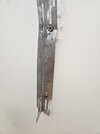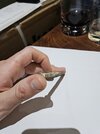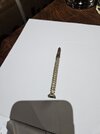I'm in the process of upgrading a radiator and I'm hitting a bit of a headache when it comes to removing the supports for the old radiator. The screws tying them in are seriously locked, the previous owner having installed so I'm not sure what's going on.
Aside from using a drill to unscrew, I've tried drilling them out, but my metal drillbits aren't making much of a dent to the screws. I've also tried prying the bracket and screws out, but all that's done is dent the plasterwork.
My next thought would be to drill into the bracket to perforate it in a line and so give a way to remove the bracket at least. Howeve, that still leaves the issue of the screw heads protruding from the wall, which might interfere with fitting the bracket for the new radiator.
Before I continue my path of destruction, I figured I'd pop a post here to see if there was anything I could be doing better or of there was a simple fix im not aware of.
Thanks for any help
Chris
Aside from using a drill to unscrew, I've tried drilling them out, but my metal drillbits aren't making much of a dent to the screws. I've also tried prying the bracket and screws out, but all that's done is dent the plasterwork.
My next thought would be to drill into the bracket to perforate it in a line and so give a way to remove the bracket at least. Howeve, that still leaves the issue of the screw heads protruding from the wall, which might interfere with fitting the bracket for the new radiator.
Before I continue my path of destruction, I figured I'd pop a post here to see if there was anything I could be doing better or of there was a simple fix im not aware of.
Thanks for any help
Chris




